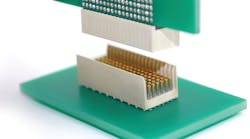Connectors Fit on Perseverance to Mars
Space missions, such as NASA’s recent touchdown of the Mars Perseverance Rover on what great British author C. S. Lewis once referred to as “The Silent Planet,” require electronic components that simply will not fail. Electronic devices, components, and PCBs must be designed and manufactured to withstand the harshest environments and operating conditions, or the result is major mission failure. NASA’s success at launching Perseverance on Earth and landing the rover “a world away” is proof of the intelligent choice of critical components. Among them are high-performance, high-reliability interconnections from Smiths Interconnect. Paul Harris, president of Smiths Interconnect, admitted: “Smiths Interconnect is proud to support the Mars Perseverance Rover with a connectivity solution specifically engineered and optimized to mitigate the effects of heat and shock and vibration, while maintaining exceptional levels of signal integrity.”
The cPCI 2-mm connectors from Smiths Interconnect (see figure) met challenging electrical, mechanical, and environmental requirements to qualify for the mission. They were characterized at NASA’s Jet Propulsion Laboratory (JPL) and subjected to failure-analysis measurements designed to predict the useful working lifetimes of the high-reliability interconnects under hostile operating conditions. The connectors endured stress testing, vibration testing, thermal shock testing, and exposure to saltwater and other corrosive materials in efforts to make them fail or at least find out how long they would last. They are among the many electronic components on the Mars Perseverance Rover that must collect data, rocks, and soil samples on “the Red Planet” and return to Earth so that NASA’s scientists can learn more about Mars.
The cPCI 2-mm interconnects are based on the company’s Hypertac hyperboloid contact technology and test to rigorous aerospace standards. They are qualified to NASA Goddard Space Flight Center (GSFC) S-311-P-822 requirements and designed for use in many mission-critical applications, including in military land air, sea, and space missions. They operate to 3.125 Gb/s with outstanding signal integrity and feature an integrated shield for low electromagnetic-interference (EMI) and radio-frequency-interference (RFI) leakage. The interconnects are constructed with liquid crystal polymer (LCP) insulators to meet NASA’s outgassing requirements for deep space. The interconnects were designed to help the Mars Perseverance Rover collect soil samples “next door” and they are built to help return them to Earth.
